Flight Buzz
Frontier Airlines CEO Issues Bleak Warning About the Future of Domestic Air Travel — Including Costs and Convenience
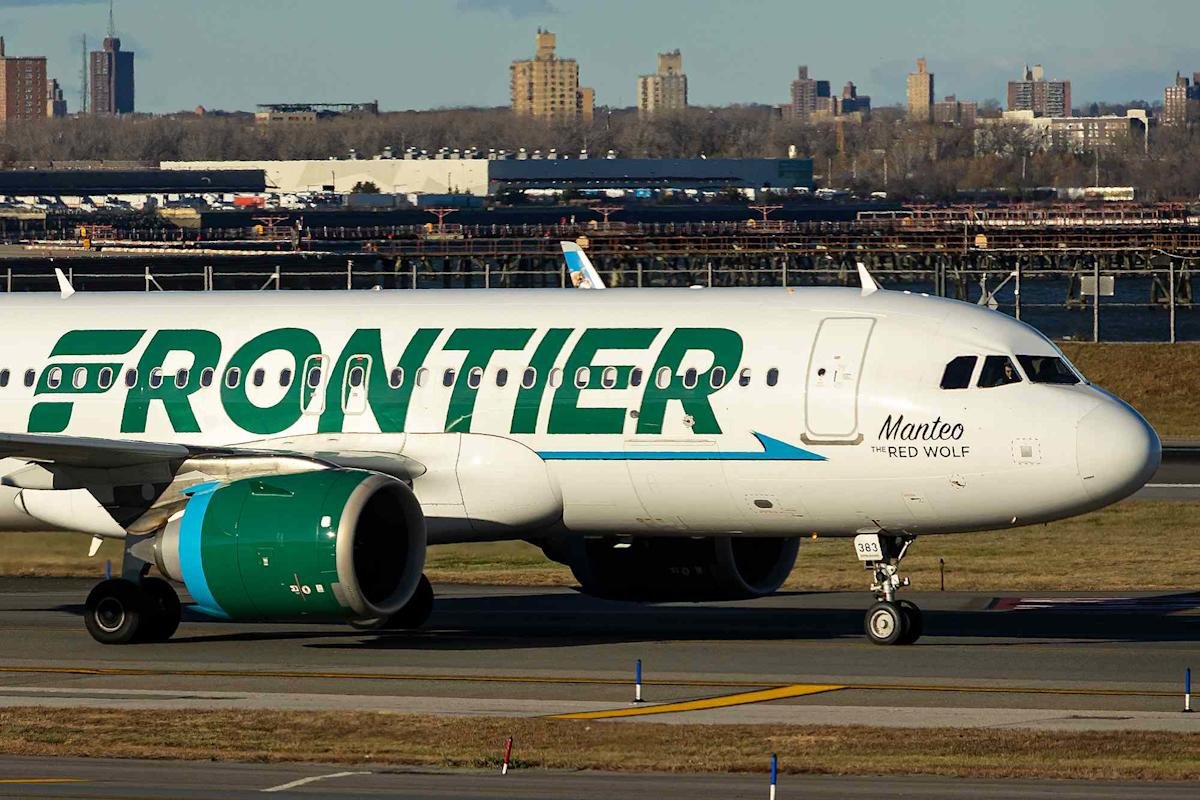
Nicolas Economou/NurPhoto via Getty
Frontier Airlines plane
-
Frontier Airlines CEO Barry Biffle warned that domestic airline travel may get less convenient and more expensive for travelers
-
He made the comments during the airline’s recent second-quarter earnings call
-
Biffle said domestic flights are not profitable for airlines due to a lack of demand, compared to the supply
Frontier Airlines CEO Barry Biffle has issued a bleak warning about the future of affordable airline travel.
“There’s going to continue to be reductions in capacity in this industry,” Biffle said during the company’s second-quarter earnings call on Aug. 5, per The Economic Times.
Biffle added that airlines will likely be forced to cut the number of flights and routes they provide to travelers, as many domestic-focused ones are proving unprofitable, The Street reported.
This would ultimately translate to fewer flight options and fewer budget fares for customers.
https://people-app.onelink.me/HNIa/kz7l4cuf
“I’m talking about domestic fares in the domestic marketplace,” Biffle said on the call. “We believe that the entire industry is not making money […] The domestic [side] is not making money. And that’s because there is too much supply relative to demand.”
While the budget airline made $929 million in profit in their second quarter of 2025, the airline had a net loss of $70 million, the company’s public financial records show.
Spencer Platt/Getty
Travelers at JFK International Airport in N.Y.C.
United Airlines CEO Scott Kirby made similar comments about the lack of profitability of current airline models during the company’s second-quarter earnings call as well, per The Street.
Kirby said, “If I dig deeper into it and I look at every airline that’s not named United or Delta, I can find at every single one of them, a double-digit percentage of their route network that loses money. And the only way for them to get margins that are anywhere close to their [wholesale acquisition cost] is to stop flying places that lose money. And that is going to ultimately happen.”
The PEOPLE Puzzler crossword is here! How quickly can you solve it? Play now!
However, not all airline execs are in agreement over the pessimistic prognosis of the industry.
American Airlines CEO Robert Isom addressed Kirby’s comments during his company’s second-quarter call, stating, per Forbes, “We don’t run our airline based on other airlines’ perception of our business.”
And while Islom acknowledged the “reluctance of domestic travelers” to get more involved in the more profitable international travel “game,” he added, “We think that’s going to change.”
Never miss a story — sign up for PEOPLE’s free daily newsletter to stay up-to-date on the best of what PEOPLE has to offer, from celebrity news to compelling human interest stories.
These discussions come at a time when the airline industry has been under much public scrutiny. Back in March, CNN reported that the “fear of flying” had driven down ticket sales in recent months, after several high-profile plane crashes.
Flight Buzz
Vande Bharat to ease rush on congested Nagpur–Pune route | Nagpur News
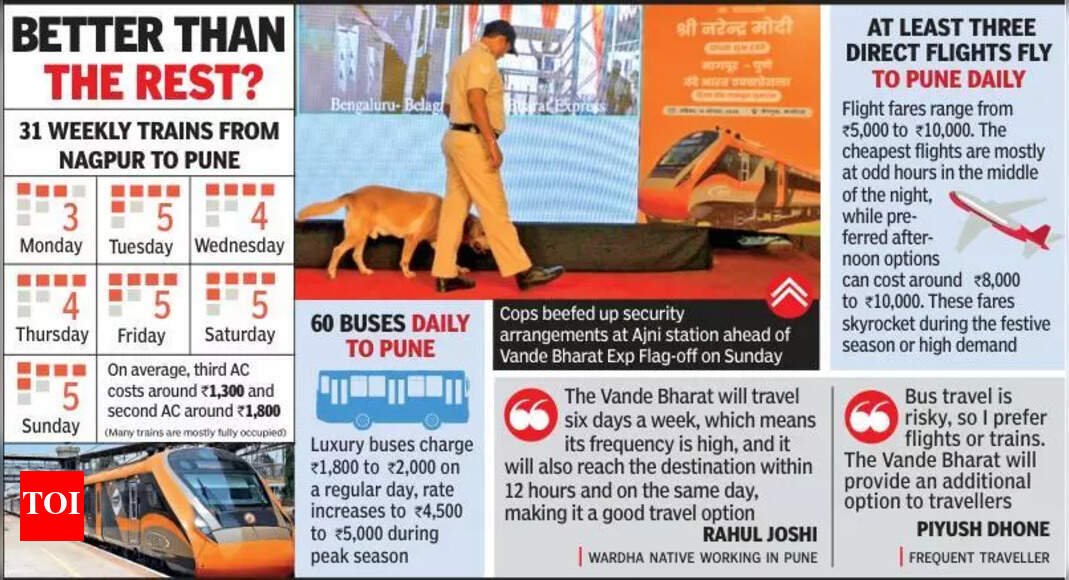
Nagpur: More than a decade ago, the Nagpur-Pune trip meant an overnight slog on one of barely 15-20 ageing private buses or a long wait for the few trains available. Today, the corridor is bustling, with 60-70 buses leaving daily, three flights taking off each day, and 31 trains operating weekly. Yet, travellers still struggle to find budget-friendly, last-minute options, especially during festivals.The Nagpur–Pune sector is one of the busiest in central India, with most modes of transport running near capacity week after week. The Nagpur-Pune Vande Bharat Express, which will be flagged off virtually by Prime Minister Narendra Modi on Sunday, promises a quicker 12-hour journey with modern seating coaches and will run six days a week.Luxury private buses currently charge Rs1,800–Rs2,000, with fares soaring to Rs4,500–Rs5,000 during peak seasons. While they advertise 15-16 hour trips, delays of a couple of hours are common. Against this backdrop, the Vande Bharat’s expected fare of around Rs1,500 for AC chair economy stands out, offering same-day arrival, punctuality, and comfort — without the odd-timings of cheaper flights or the tedium of road travel.Private bus operator Mahendra Luley acknowledged the new competition. “It will impact our business, but it will mostly depend on the priority of the traveller. If the traveller prefers the bus at his preferred time, he will choose it. The same goes for Vande Bharat,” he said. Rahul Joshi, a Wardha native working in Pune, said, “The Vande Bharat will travel six days a week, which means its frequency is high, and it will also reach the destination within 12 hours and on the same day, making it an important addition.”At least three flights connect Nagpur and Pune daily, costing Rs5,000–Rs10,000. The cheapest departs at 3.40am, forcing passengers to reach the airport in the middle of the night. Afternoon flights, more convenient for most, are priced at Rs8,000–Rs10,000, with festive fares shooting up to Rs15,000 or more.“While travelling to Pune by air once, I reached the Nagpur airport at around 1.30am as the flight was at 3.40am. It was a cheaper than other flights. I reached Pune early in the morning. Since I was awake the whole night, my work was hindered,” said Piyush Dhone, a regular traveller. Dhone added that festive or emergency bookings make flights unaffordable. “Bus travel is risky, so I prefer flights or trains. The Vande Bharat will provide an additional option to travellers,” he said.Bharat Kumar Shukla, secretary of Bharatiya Yatri Kendra, welcomed the Vande Bharat service but called for changes. “The rates are higher than other trains. The railway ministry must introduce sleeper coaches and reduce rates so that it will be more accommodating for middle-class and lower-middle-class passengers,” he said.The Vande Bharat is not only going to serve the travellers from Nagpur and Pune but also the 10 stations where it will stop. Many citizens said now it would be more convenient to travel to Shegaon from Nagpur as it will be just a three hours journey as against five to six hours by road.
Flight Buzz
PSA Airlines Cancels Flights Across Ten US Airports Including Reagan National, Dallas-Fort Worth, Charlotte, Savannah and more, Update You Need to Know Now
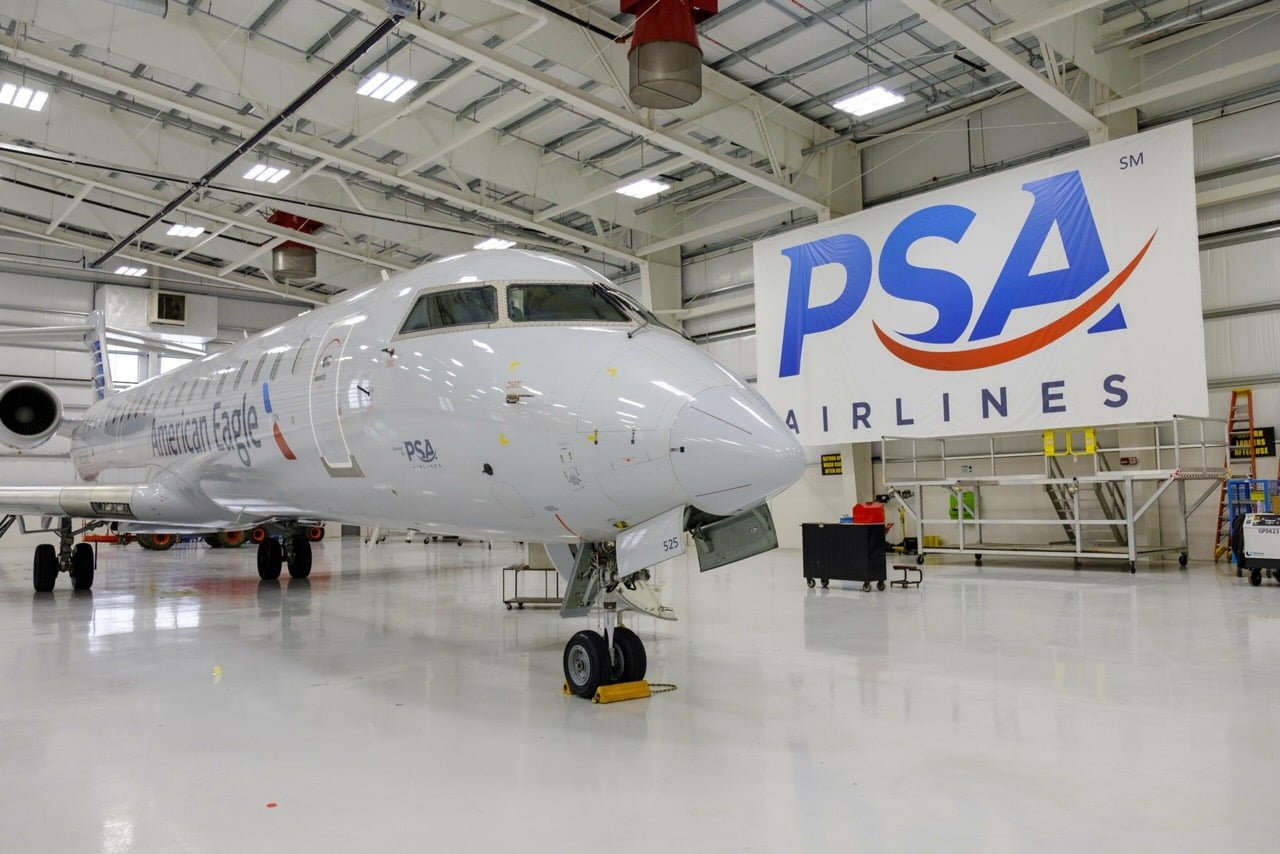
Published on
August 10, 2025 |
On August 9, 2025, PSA Airlines, a regional carrier under the American Eagle brand, experienced significant disruptions, leading to numerous flight cancellations across several major U.S. airports. Affected airports included Reagan National, Dallas-Fort Worth, Charlotte, Savannah, McGhee Tyson, Piedmont Triad, Daytona Beach, New Orleans, Charleston and Manchester Boston Regional. These cancellations disrupted travel for many passengers, particularly those scheduled to depart from or arrive at these busy hubs. Although the specific reasons for the disruptions were not known, things like the weather, technological failure or mechanical functions could have caused the issue. Consequently, the travellers had to go through the delays and the rebooking process, which is the most inefficient way to run.
Affected Airports:
The cancellations primarily impacted regional routes operated by PSA Airlines’ Bombardier CRJ900 aircraft. These aircraft are integral to American Airlines’ regional network, serving as a vital link between smaller cities and major hubs. With multiple departures and arrivals canceled, several airports, including Reagan National and Dallas-Fort Worth, witnessed severe congestion as travellers rushed to rebook flights or wait for updates.
Affected passengers found themselves stranded, leading to frustration as they faced long queues at check-in counters and customer service desks. Despite these challenges, PSA Airlines and its parent company, American Airlines, worked swiftly to accommodate those impacted by the cancellations, offering rebooking options and meal vouchers as necessary. However, the large number of canceled flights meant that many passengers faced delays and rebookings that pushed their travel schedules back by several hours, or even days.
While the exact reasons for the cancellations have not been disclosed, such disruptions are typically caused by a mix of factors including adverse weather conditions, mechanical issues or operational bottlenecks. For instance, severe weather systems can delay airport operations, with thunderstorms and strong winds particularly affecting regional airports that might not have the infrastructure to handle these disruptions effectively. Additionally, technical malfunctions or staffing issues can lead to operational delays.
Airlines frequently advise passengers to stay informed about weather patterns and potential disruptions, especially when flying from busy airports like Dallas-Fort Worth, Reagan National and Charlotte, which are prone to weather-related delays due to their size and volume of traffic. While PSA Airlines has not confirmed any specific weather-related issues, these are common causes for mass cancellations, especially during summer and fall months when weather conditions are unpredictable.
Travellers going through the specific airports were highly inconvenienced. Moreover, airlines were not the only ones selling tickets; nearby hotels were being fully booked as travellers were forced to change their travel plans. A majority of the travellers, especially the ones on connecting flights, were required to change their travel itineraries due to the prolonged sitting time and lack of available seats on the flights that were booked for them.
The scenario was equally aggravating for travellers coming into airports like Reagan National and Dallas-Fort Worth. For some, there was enduring queues within the terminals as they tried to talk to airline personnel concerning the schedules of their flights and search for other flights to connect to.
With the actions that PSA Airlines did in alleviating some of these problems, for instance, the issuance of vouchers for meals and the willingness to rebook customers to the next available flights, the number of flights that were cancelled stretched the customer service of the airline. This affected many customers in that they were not able to get the help that they needed in a timely manner.
PSA Airlines, a subsidiary of American Airlines, worked diligently to mitigate the impact of these cancellations. In addition to providing rebooking options, the airline kept passengers updated through social media channels and direct notifications. American Airlines, the parent company, also provided additional resources at impacted airports to assist passengers and ease congestion.
Despite the best efforts of the airline, the sheer scale of the disruptions made it challenging to quickly resolve all issues. PSA Airlines and American Airlines were transparent with passengers, keeping them informed about the situation and offering flexible rebooking options, though some passengers experienced delays in receiving assistance due to the high volume of inquiries.
This incident underscores the unpredictability of air travel and the importance of preparation and flexibility for travellers. While PSA Airlines has since resumed normal operations, passengers planning to travel through major airports like Reagan National, Dallas-Fort Worth and Charlotte should remain vigilant about potential disruptions, especially when flying during peak seasons or in areas susceptible to weather-related delays.
To minimize the impact of such disruptions, passengers are advised to sign up for flight status notifications from airlines, stay informed about weather conditions and allow for extra time when making connections. Travellers should also keep in mind that cancellations and delays are sometimes inevitable, even with the best planning and contingency measures in place.
The PSA Airlines flight cancellation occurrences on August 9, 2025, illustrate the challenges airlines face integrating a vast network of regional airports. Listed passengers on connecting flights faced significant travel disruptions; however, the airline made reasonable efforts to accommodate passengers on alternate flights who required assistance. The earlier described situation highlights the importance of anticipating turning flexibility concerning real-time data on the movement around secondary airports like Reagan National, Dallas-Fort and Charlotte that tend to have ripple effect interruptions.
For passengers, keeping updated with information that can aid them scan avoid long queues or intricate processes is very favorable. In a separate but related manner, the staff customers track the feeds because they expect changes and updates as the trip gets closer.
Source:
Flight Buzz
Booking Flights At 2 AM Will Save You Big Time

At some point, you’ve probably heard that booking flights at 2 a.m. is the secret to finding the cheapest deals. It’s a popular tip that has been circulating by word of mouth and social media for years. But is this advice true, or is it just another believable travel myth? It actually falls somewhere in the middle.
Airfare pricing isn’t random. It’s determined by artificial intelligence (AI) and machine learning systems that adjust prices in real time based on several factors that can change at any moment. While searching in the middle of the night doesn’t guarantee you’ll find the lowest fare, there are a few reasons why late-night searches can work in your favor.
Here are the real reasons why flight prices change, and how night owls might get lucky with a cheap fare if they know what to look for.
Late-Night Flight Searches May Beat The Algorithm
Airlines use dynamic pricing, a strategy that changes ticket prices in real time based on things like demand, competition, and seat availability. These factors can shift quickly, which is why flight prices often change throughout the day.
According to a report from NBC News, because of this strategy, the number of people actively searching for flights can influence pricing. When fewer people are browsing a specific route, prices may dip due to lower demand. On the other hand, if a large number of users are searching for the same destination, even if they’re not booking, it can trigger an increase in fare prices, simply because the system registers a surge in interest.
That’s why booking in the middle of the night, like at 2 a.m., can work in a traveler’s favor. With fewer people online and most corporate bookings happening during business hours, there’s less competition for fares and less activity stimulating the pricing algorithm.
Late-night searches for flights can also line up with airline flash sales – many of which drop just before or after midnight.
Flash Sales Tend To Launch At Midnight
A man and woman booking flight tickets on a laptop.
Many travelers have probably come across a website late at night that’s down for maintenance. This is because companies often schedule updates during off-peak hours, which would include 2 a.m. Airlines follow the same logic when launching flash sales. These limited-time deals offer steep discounts on select routes, are designed to create urgency, and often go live right around midnight.
By rolling out deals when internet traffic is low, airlines can prevent their sites from slowing down or crashing. Midnight is often the start of a new pricing day in many airline systems, which is when scheduled fare updates or flash sales may go into effect. But because airlines operate across multiple time zones, what counts as “midnight” varies. In other words, these updates might appear at different times depending on where you’re searching from.
This is why timing is important in this case. If a sale launches at midnight and only a handful of discounted seats are available, you may still have a chance to grab one by searching shortly after. To improve the odds of booking a flash deal, travelers should find out the airline’s local time zone, set fare alerts in advance, and book directly through the airline’s website instead of on third-party platforms.
Third-Party Booking Sites Can Help Travelers Snag Leftover Deals
The Skyscanner app on a smartphone.
Online travel agencies (OTAs) like Booking.com, Expedia, Google Flights, and Skyscanner are great for comparing fares across multiple airlines, but they don’t always have the most up-to-date prices listed. If you’ve ever clicked on a great deal only to see a higher price at checkout, you’ve experienced this delay in real time.
OTAs use Application Programming Interfaces (APIs) to pull pricing data directly from the airlines. However, depending on the software and how often the data refreshes, the updates don’t always sync right away. As a result, travelers might see a lower fare that’s already changed on the airline’s website.
These leftover fares usually don’t last long, but travelers may be able to book the deal before the system catches up. However, it’s important to keep in mind that the fare might disappear at checkout if it’s already expired.
Does the Day You Book Flights Still Matter?
calendar with pins on certain days
For years, travelers have been told to book flights on a Tuesday to get the best deals. But according to a TikTok video from @cnbcselect, the day you book your flight doesn’t really matter anymore. Because of dynamic pricing and real-time fare updates, cheap tickets can appear any day of the week.
What does matter is the day of the actual flight. Mondays and Fridays tend to be more expensive since business travelers prefer these days. On the other hand, flights that leave on Tuesdays, Wednesdays, and Thursdays are usually cheaper because demand is lower. The time of day a flight leaves also affects the price. Early morning flights are often less expensive because most people don’t want to wake up early to catch them.
Finally, travelers should follow the “21-day rule,” which says that three weeks before departure is the latest anyone should book a flight to minimize unexpected price increases. After the 21-day mark, airlines often raise fares as travel dates get closer.
While there’s no longer a “best day” to purchase a flight ticket, the idea of booking it at 2 a.m. does hold some truth. Booking flights can seem like a guessing game, but understanding how the system works can give you an advantage while searching for the best deal.
-

 Brand Stories3 weeks ago
Brand Stories3 weeks agoBloom Hotels: A Modern Vision of Hospitality Redefining Travel
-

 Brand Stories2 weeks ago
Brand Stories2 weeks agoCheQin.ai sets a new standard for hotel booking with its AI capabilities: empowering travellers to bargain, choose the best, and book with clarity.
-

 Destinations & Things To Do3 weeks ago
Destinations & Things To Do3 weeks agoUntouched Destinations: Stunning Hidden Gems You Must Visit
-

 Destinations & Things To Do2 weeks ago
Destinations & Things To Do2 weeks agoThis Hidden Beach in India Glows at Night-But Only in One Secret Season
-

 AI in Travel3 weeks ago
AI in Travel3 weeks agoAI Travel Revolution: Must-Have Guide to the Best Experience
-

 Brand Stories1 month ago
Brand Stories1 month agoVoice AI Startup ElevenLabs Plans to Add Hubs Around the World
-

 Brand Stories4 weeks ago
Brand Stories4 weeks agoHow Elon Musk’s rogue Grok chatbot became a cautionary AI tale
-

 Brand Stories2 weeks ago
Brand Stories2 weeks agoContactless Hospitality: Why Remote Management Technology Is Key to Seamless Guest Experiences
-

 Asia Travel Pulse1 month ago
Asia Travel Pulse1 month agoLooking For Adventure In Asia? Here Are 7 Epic Destinations You Need To Experience At Least Once – Zee News
-

 AI in Travel1 month ago
AI in Travel1 month ago‘Will AI take my job?’ A trip to a Beijing fortune-telling bar to see what lies ahead | China

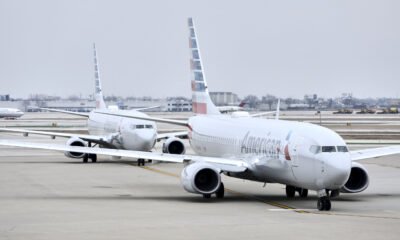



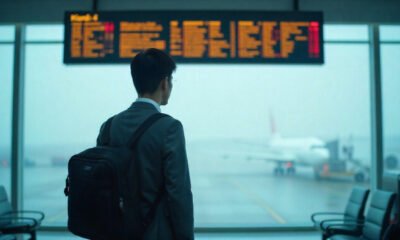



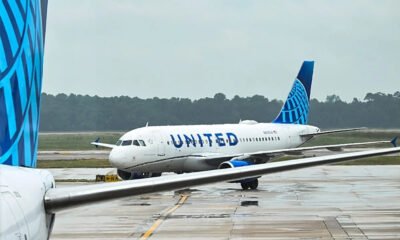

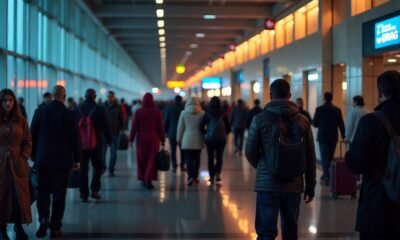

You must be logged in to post a comment Login